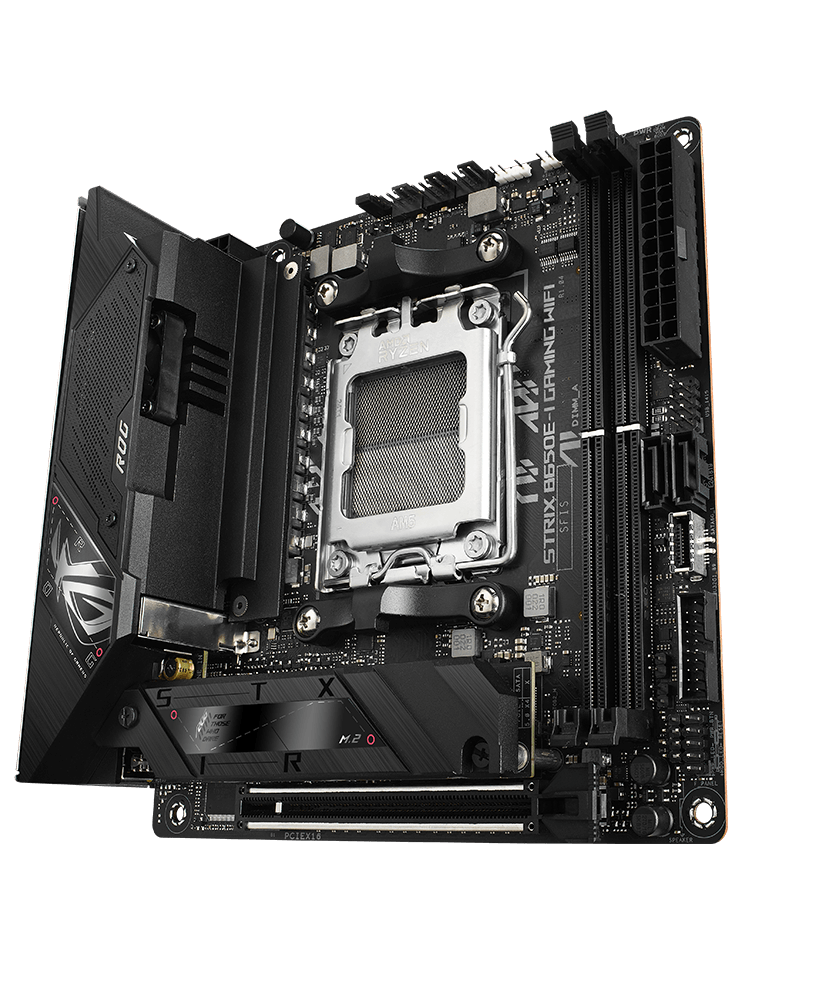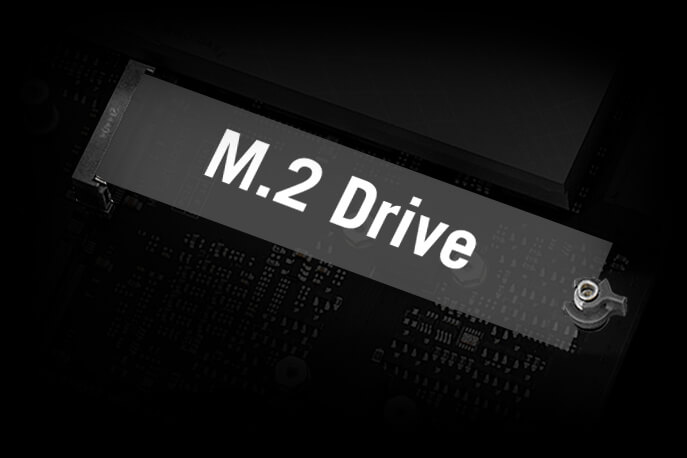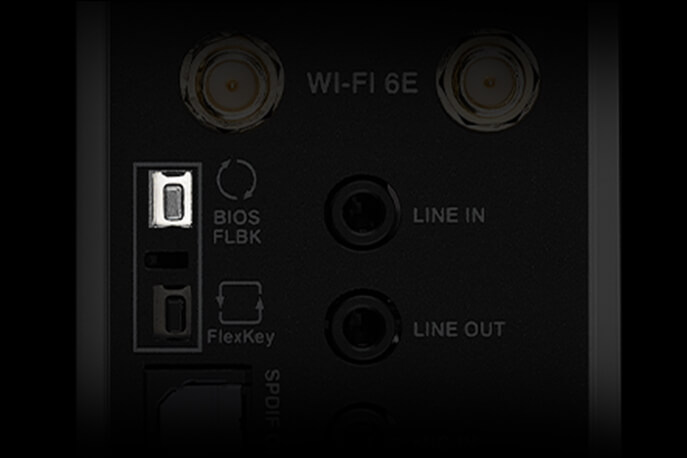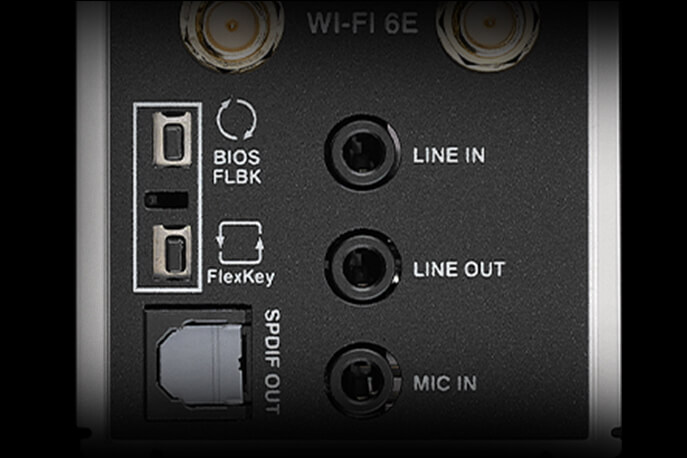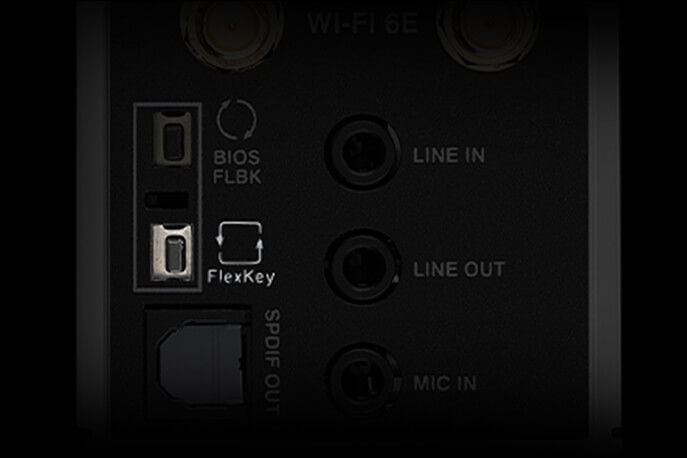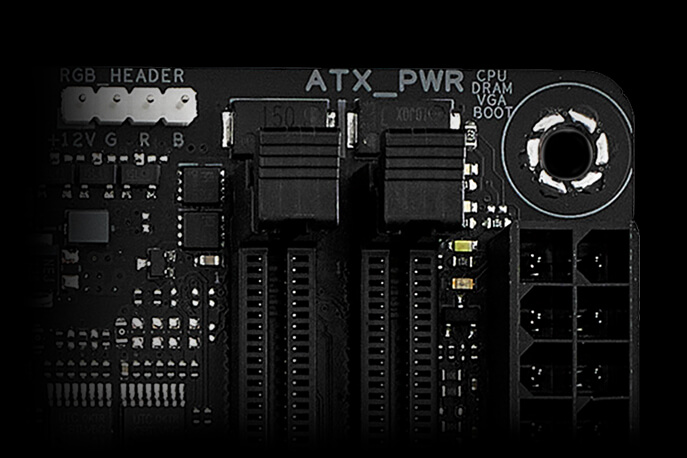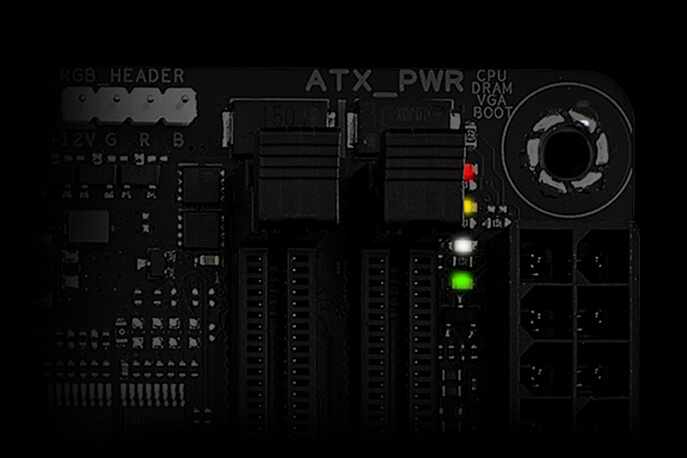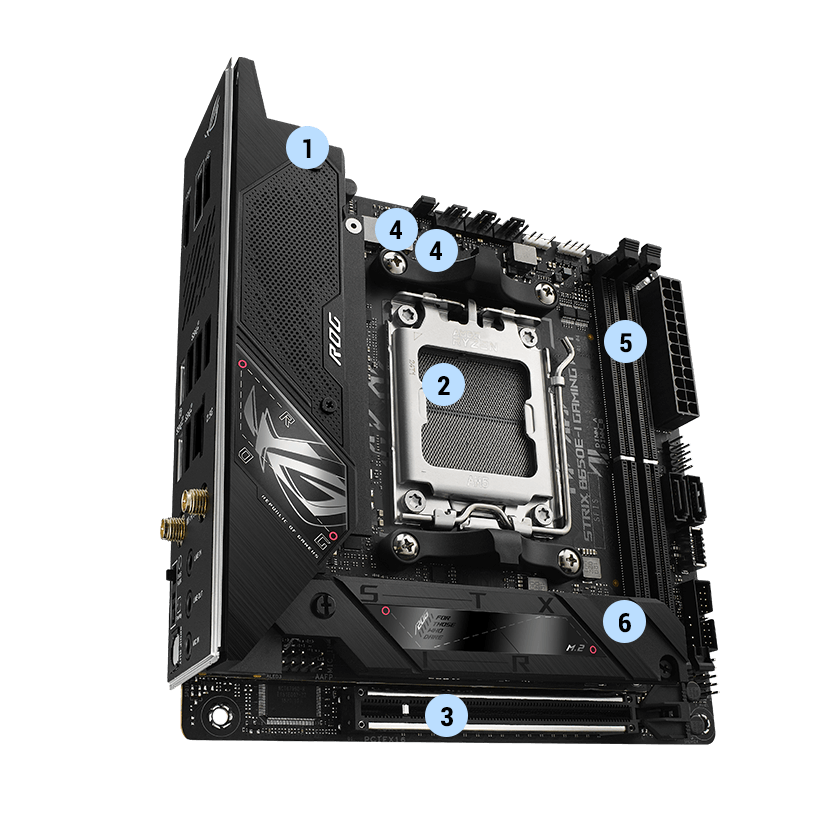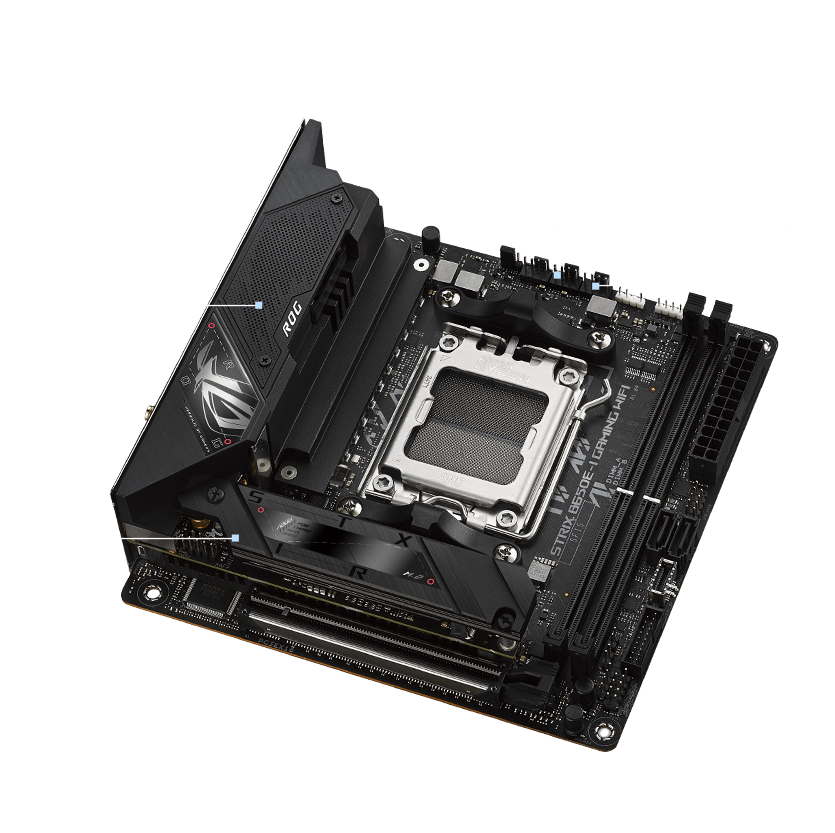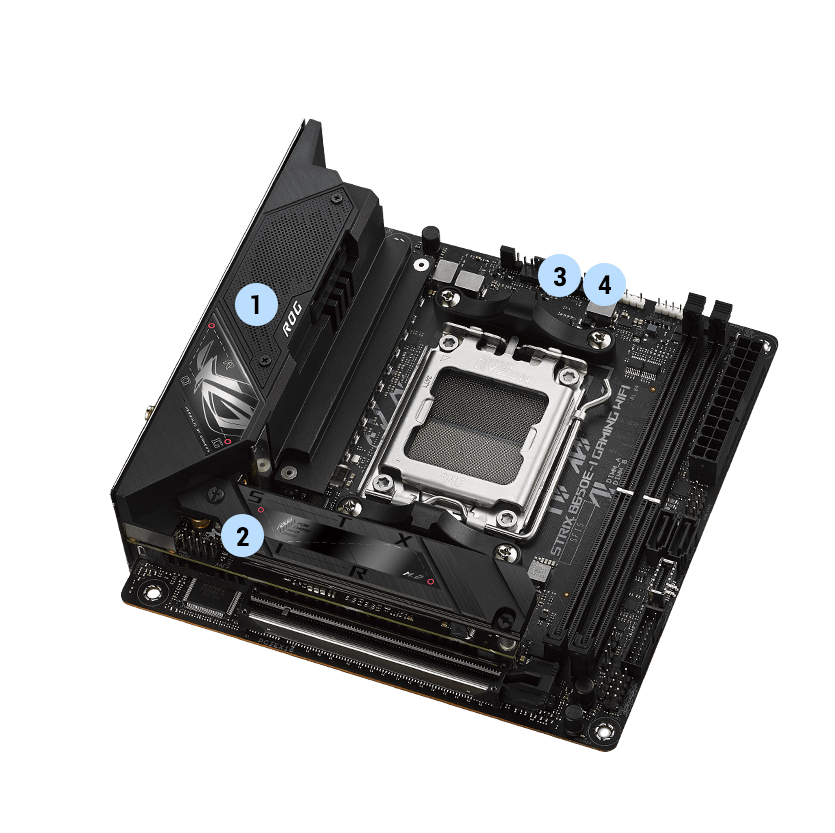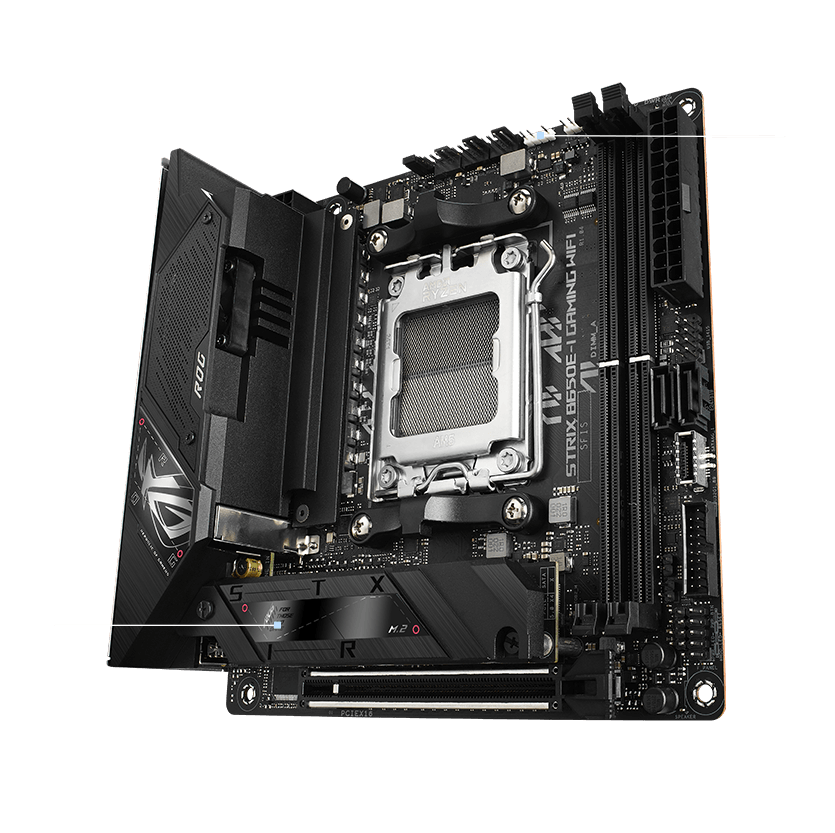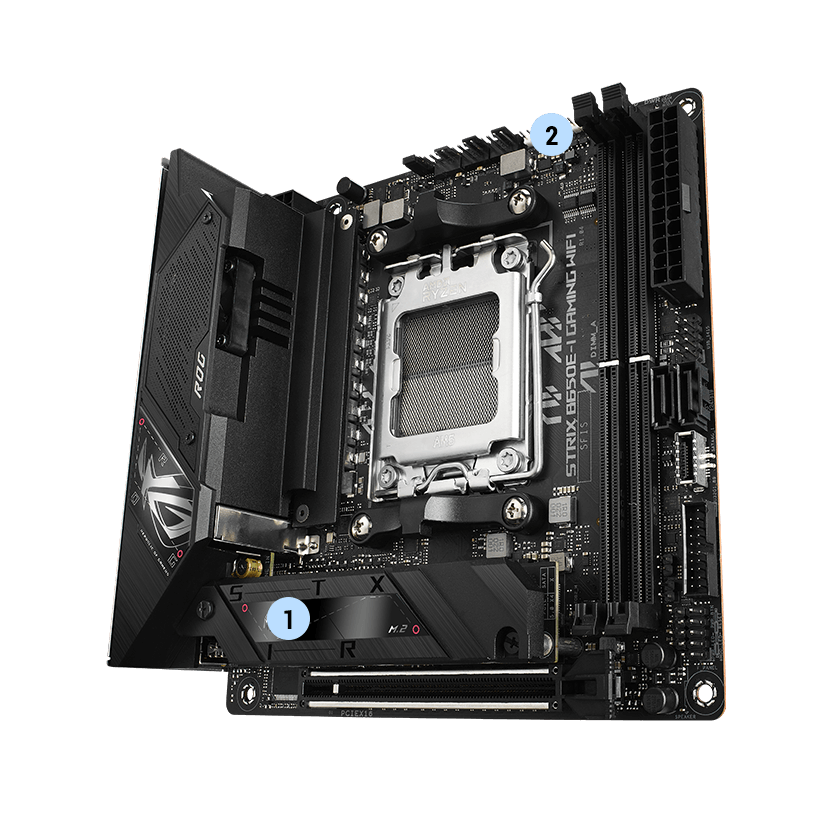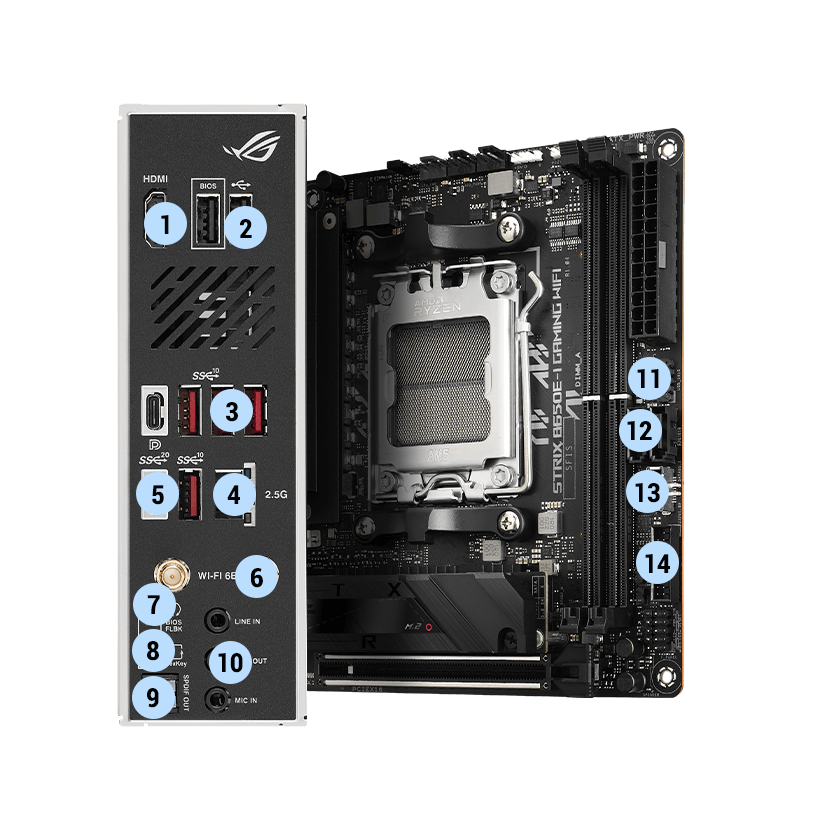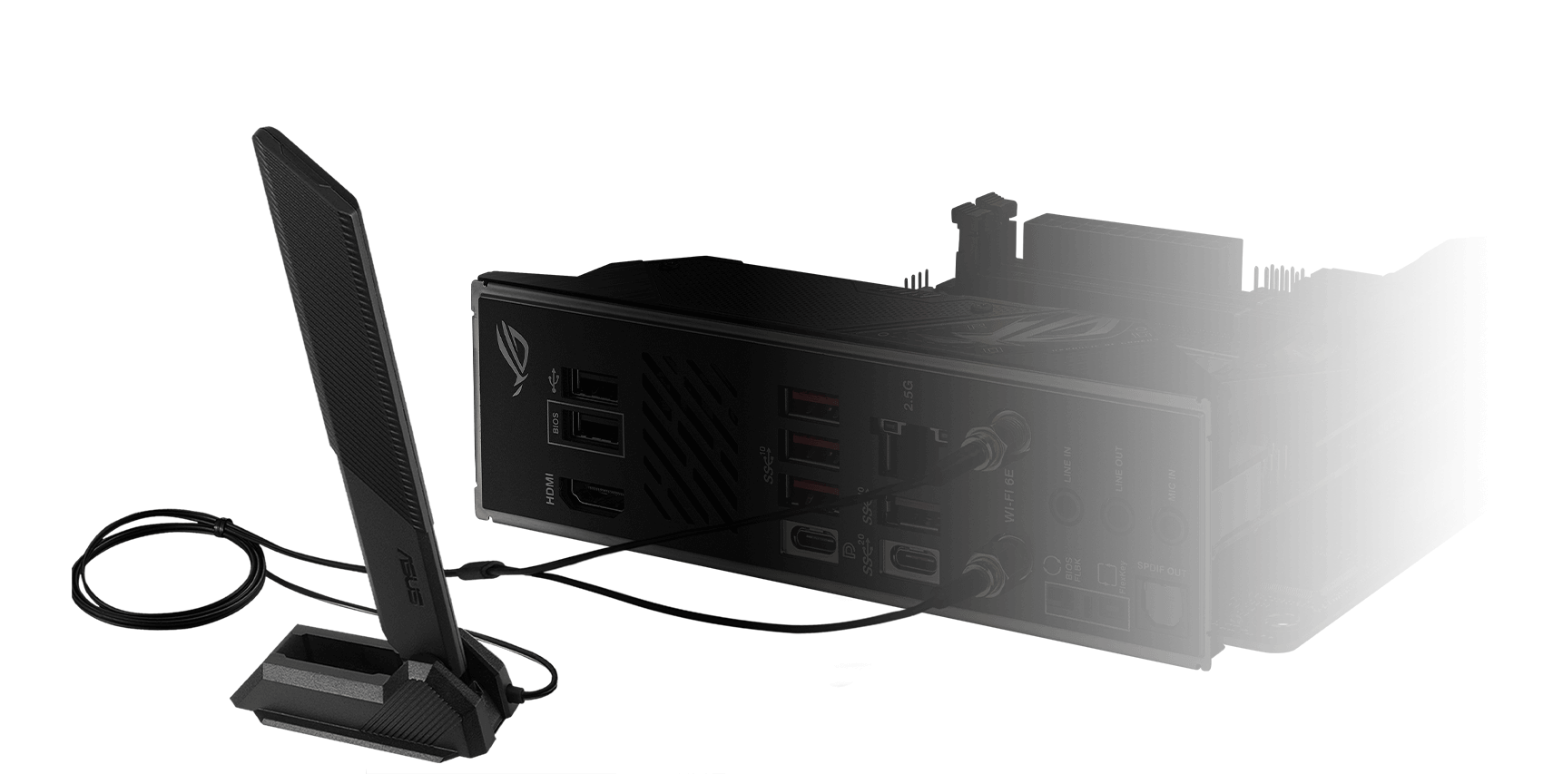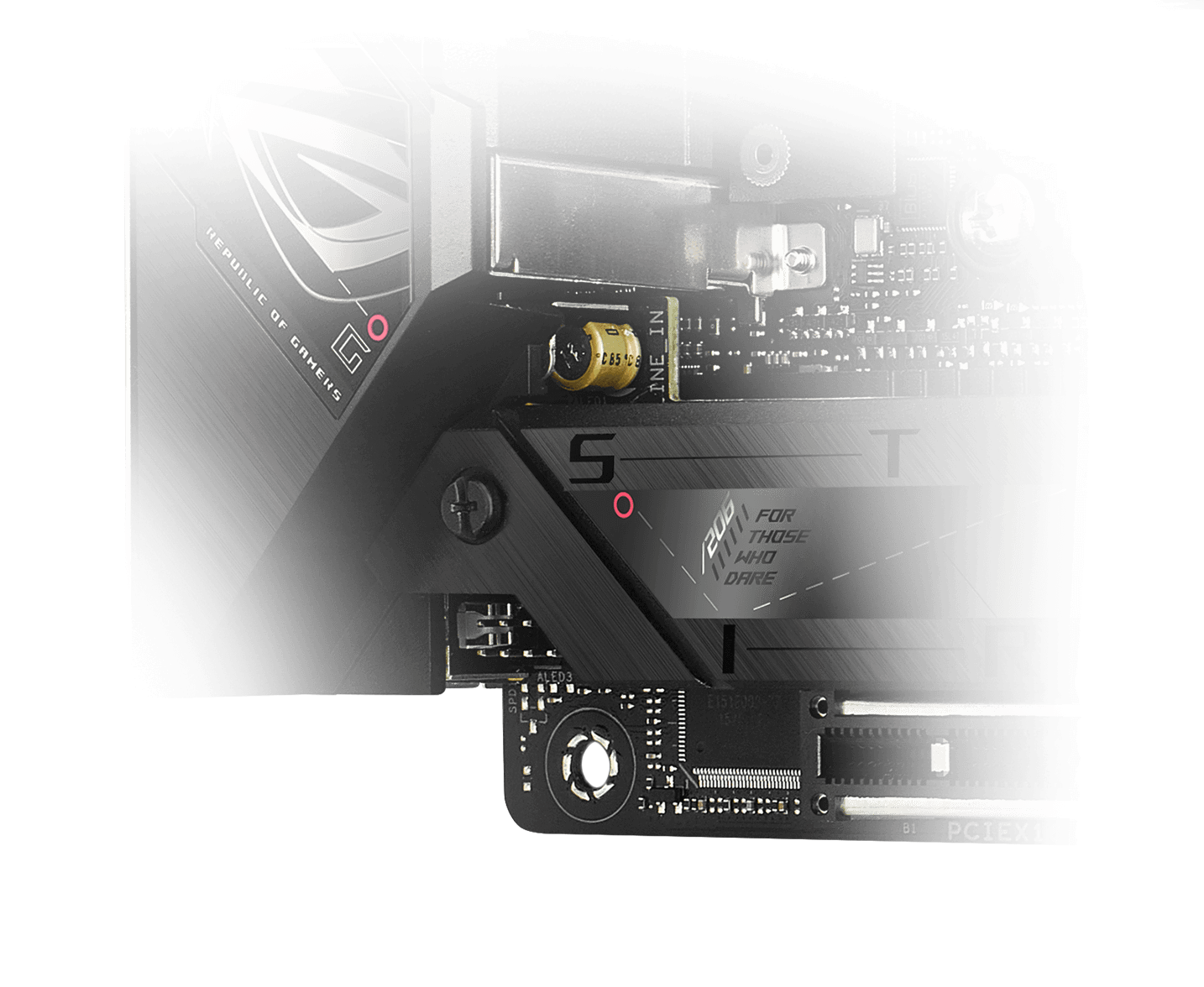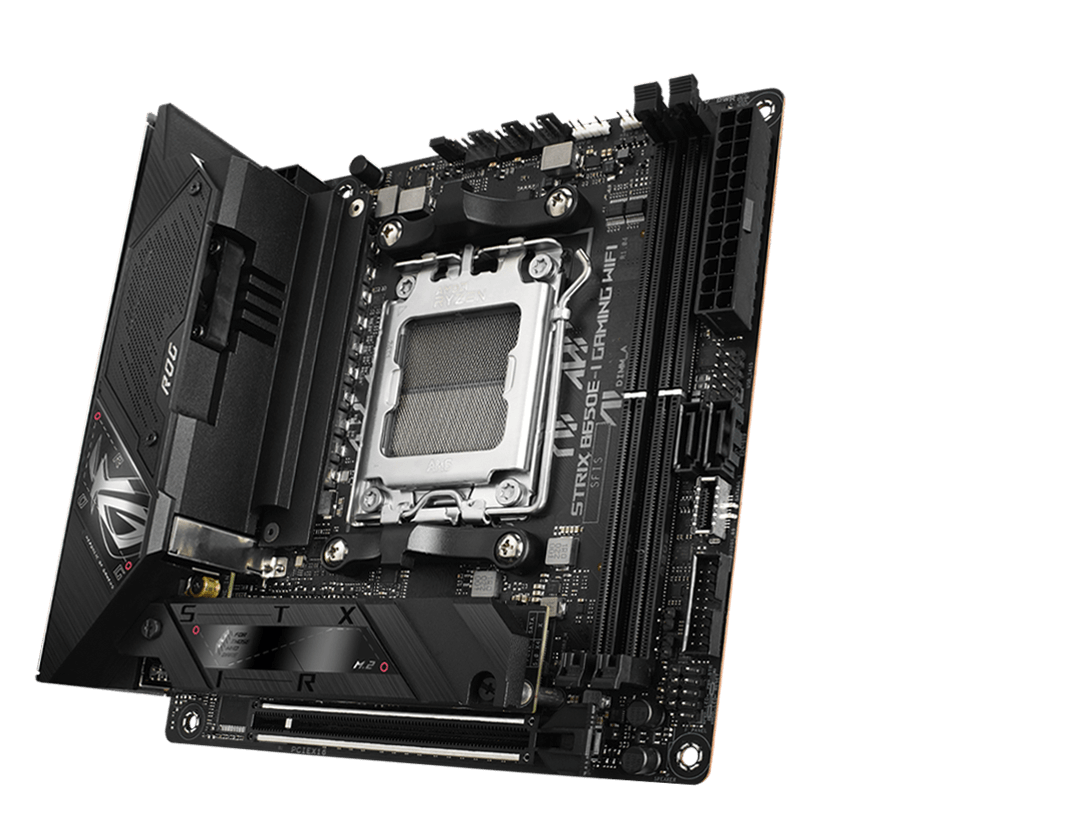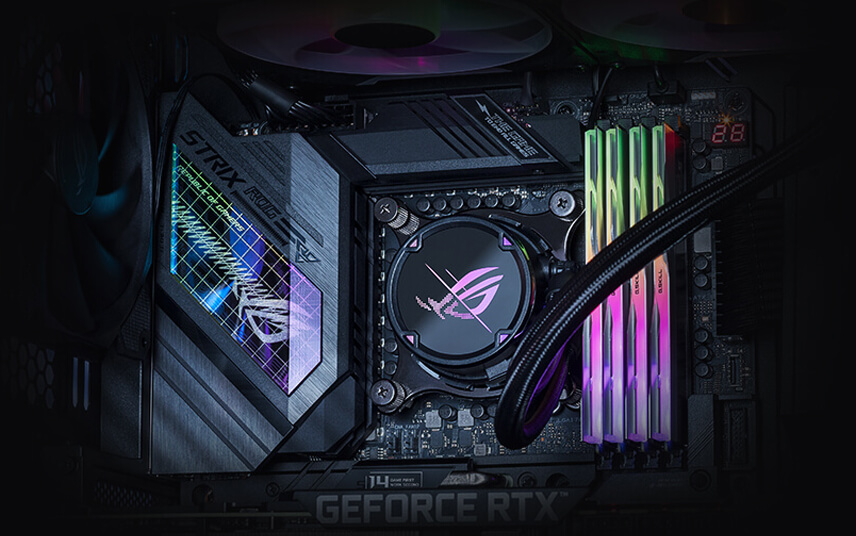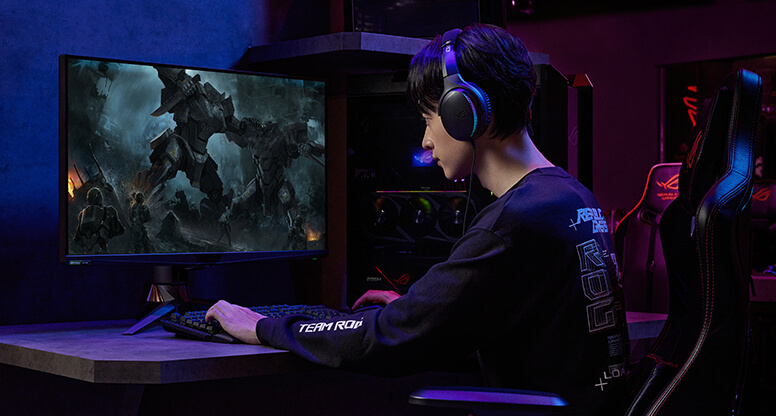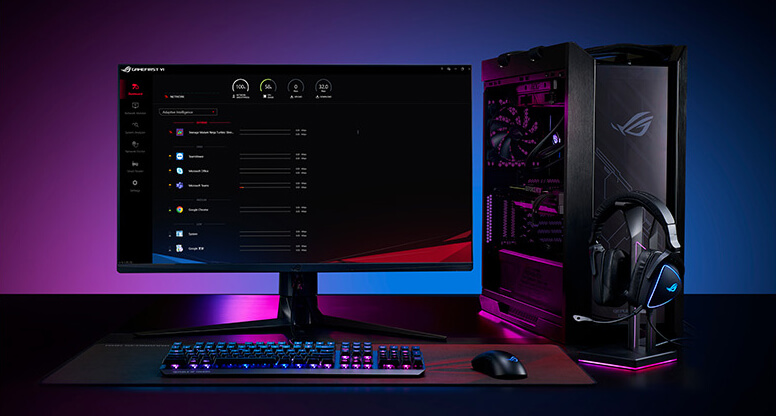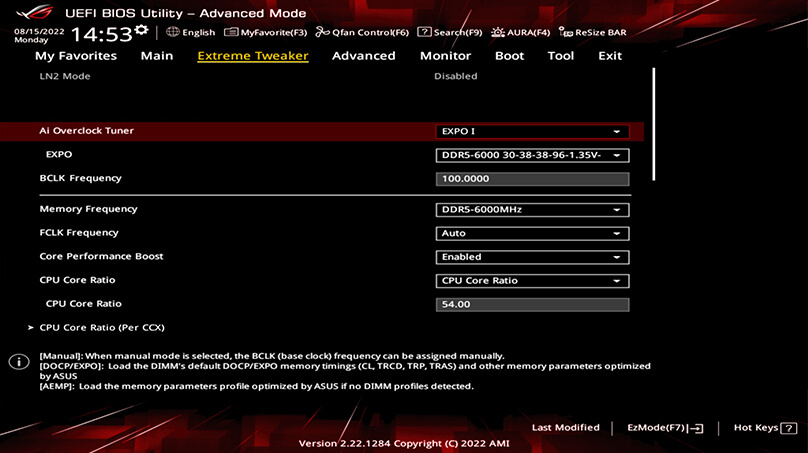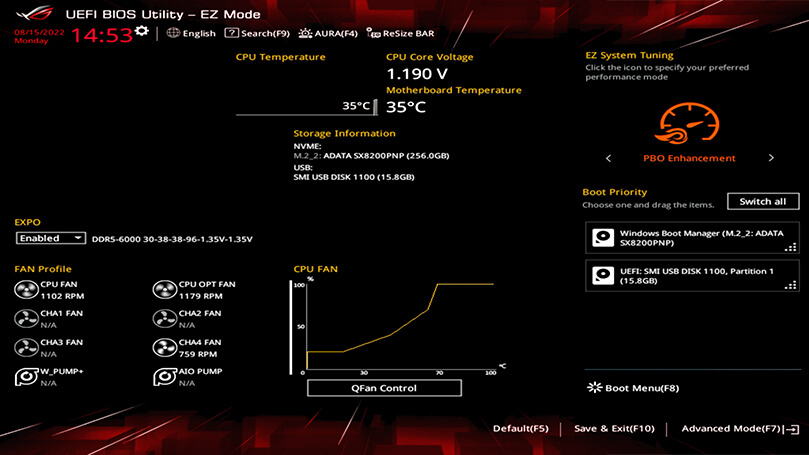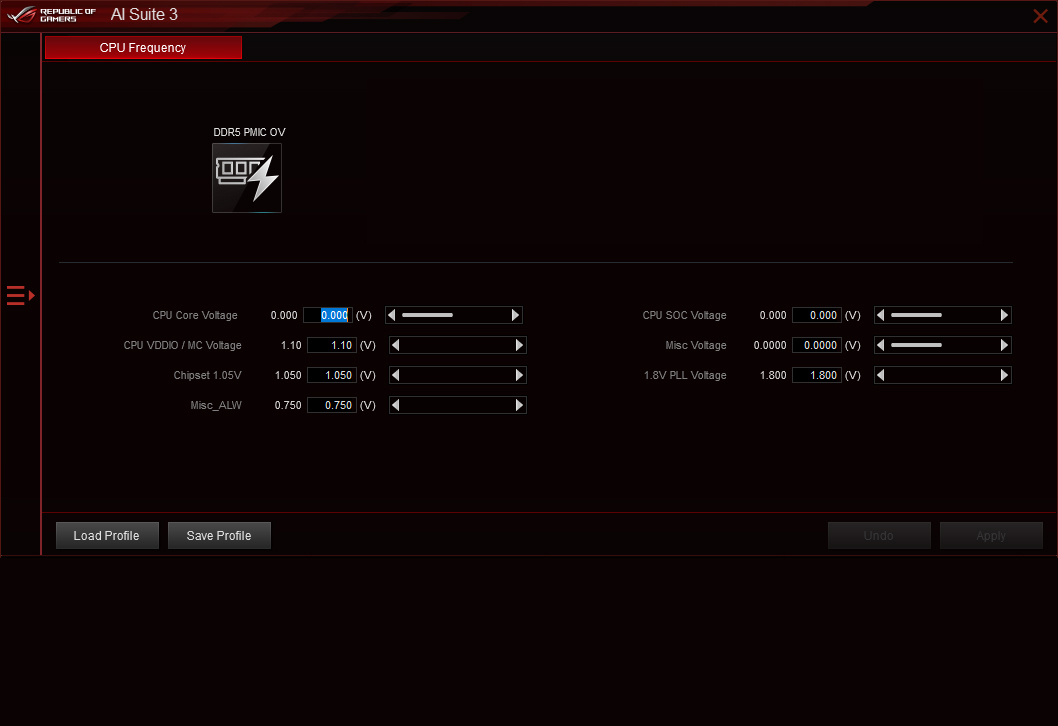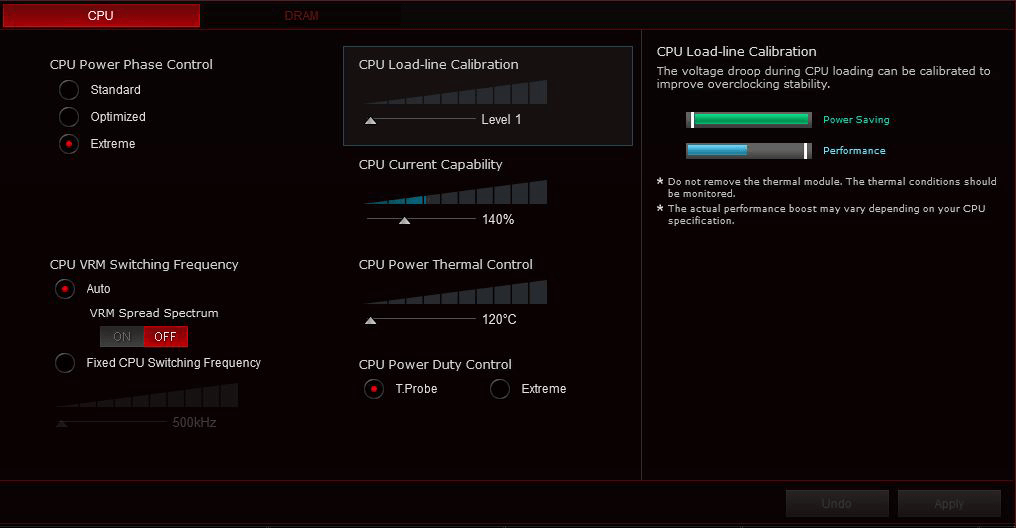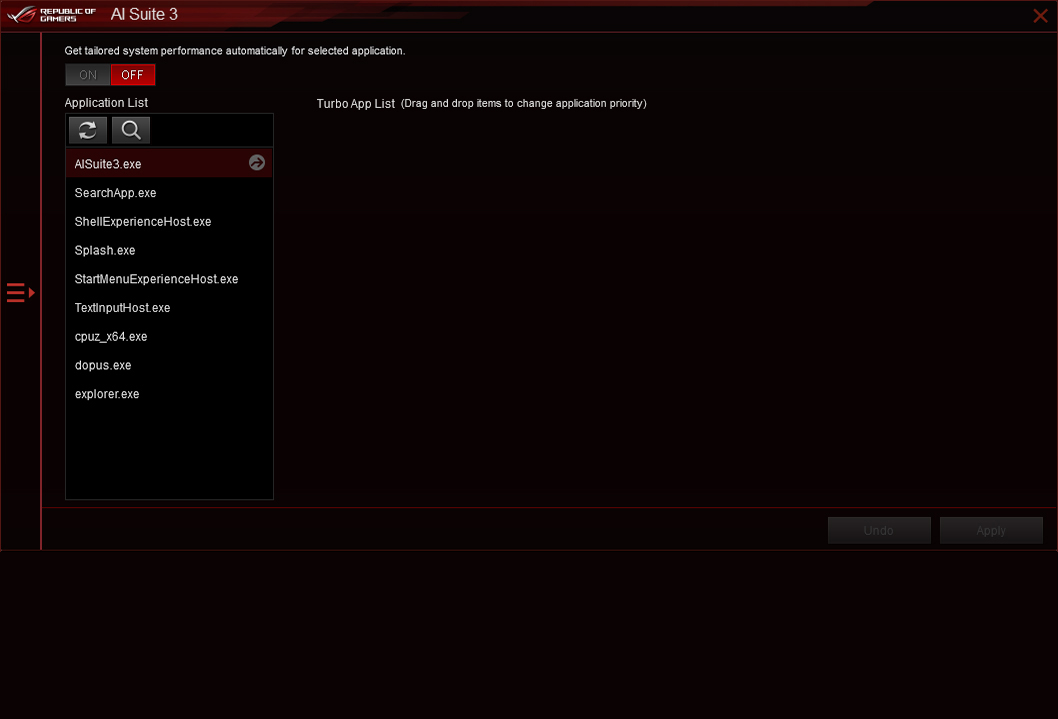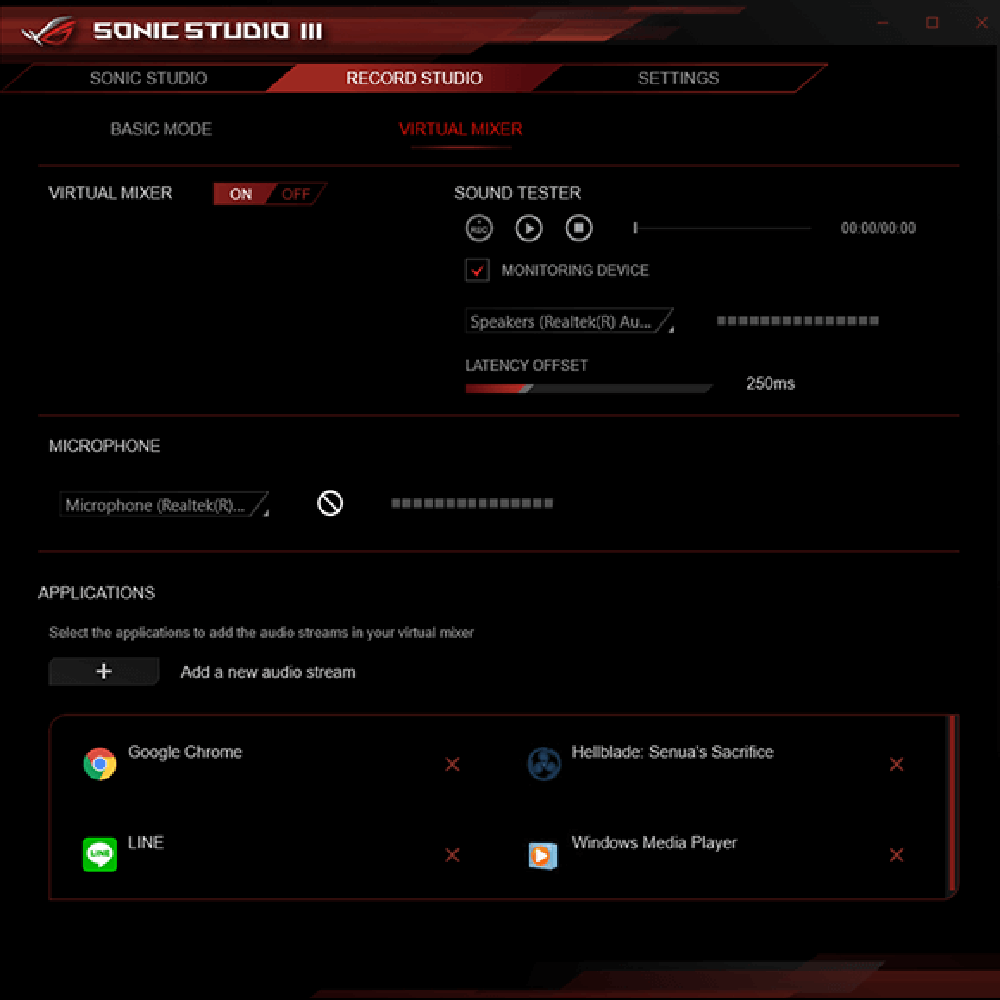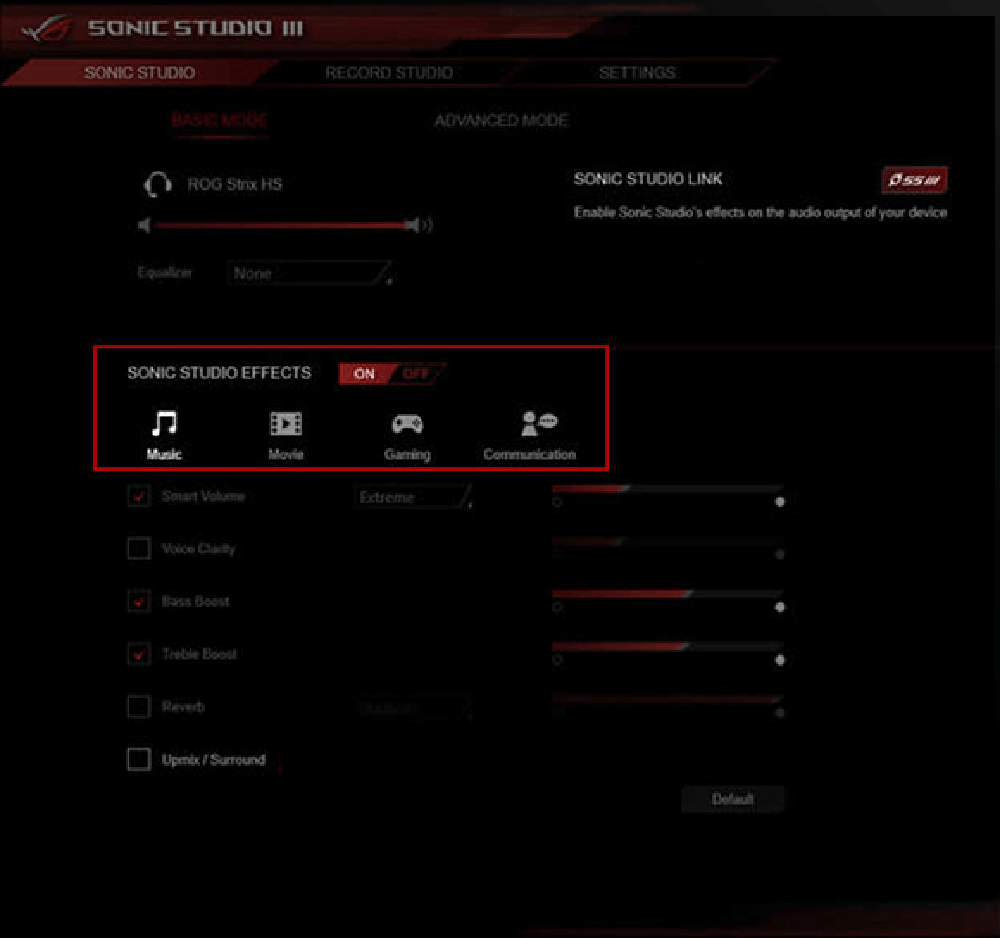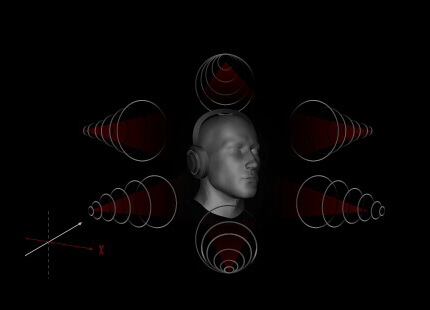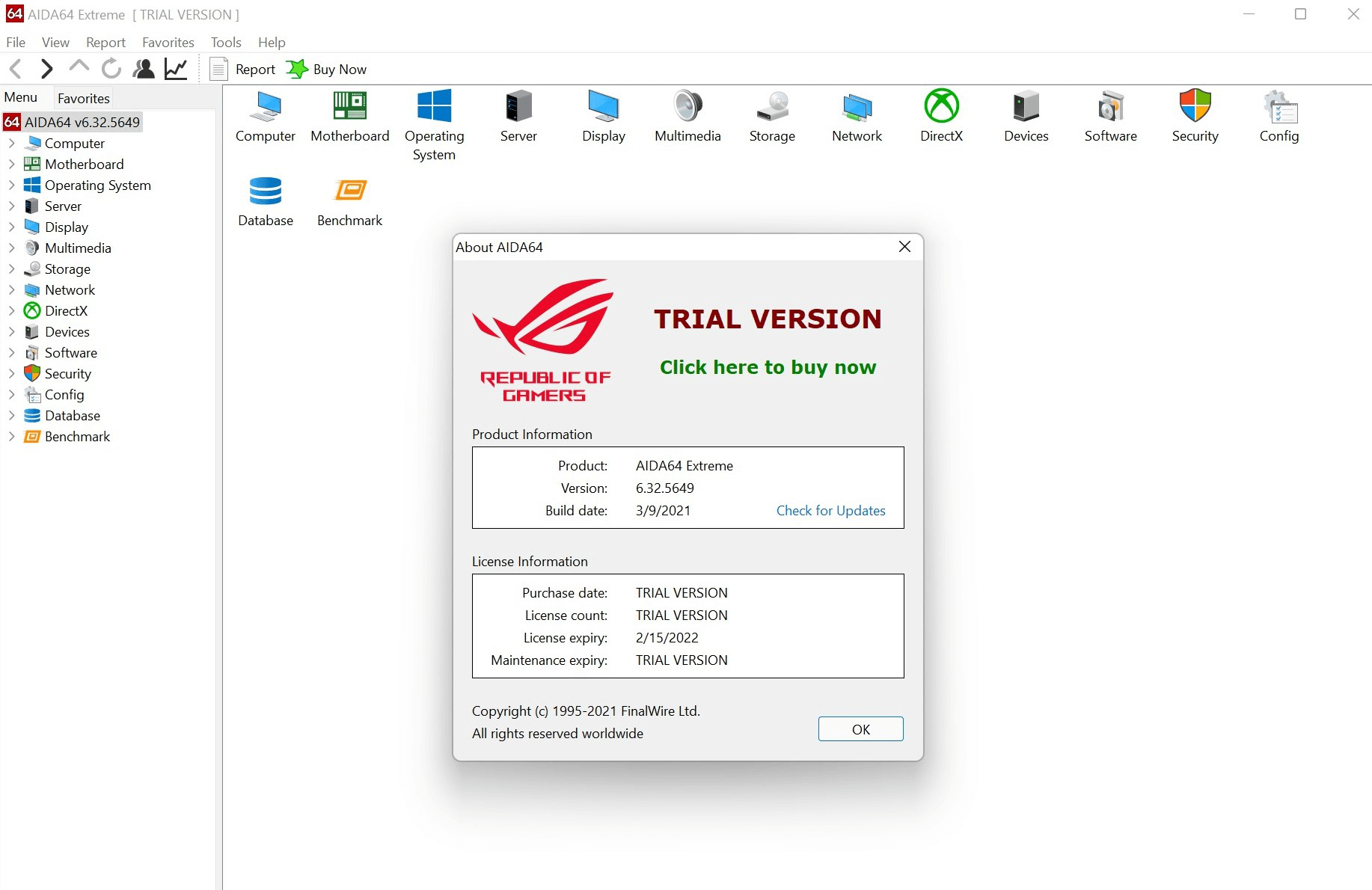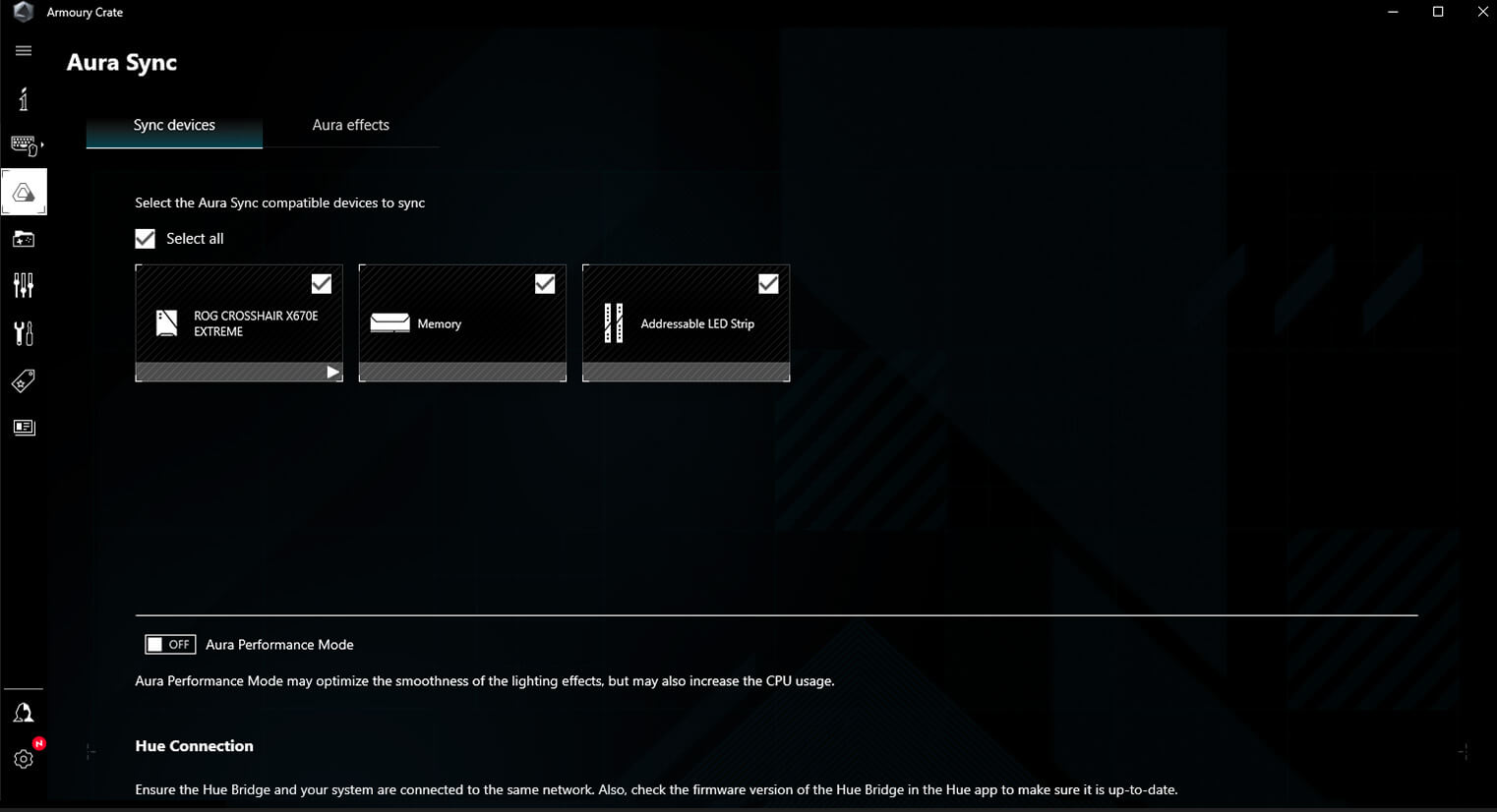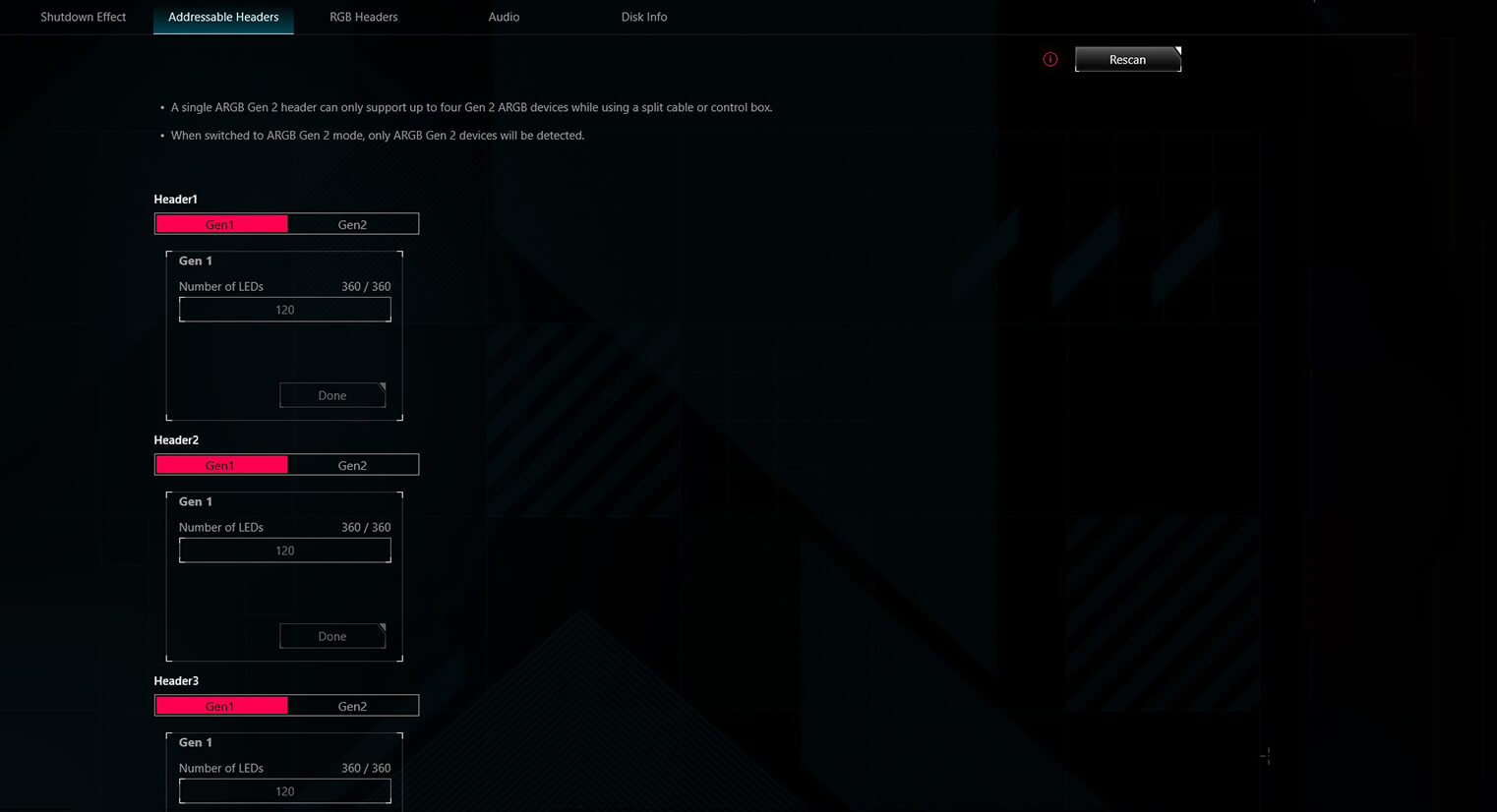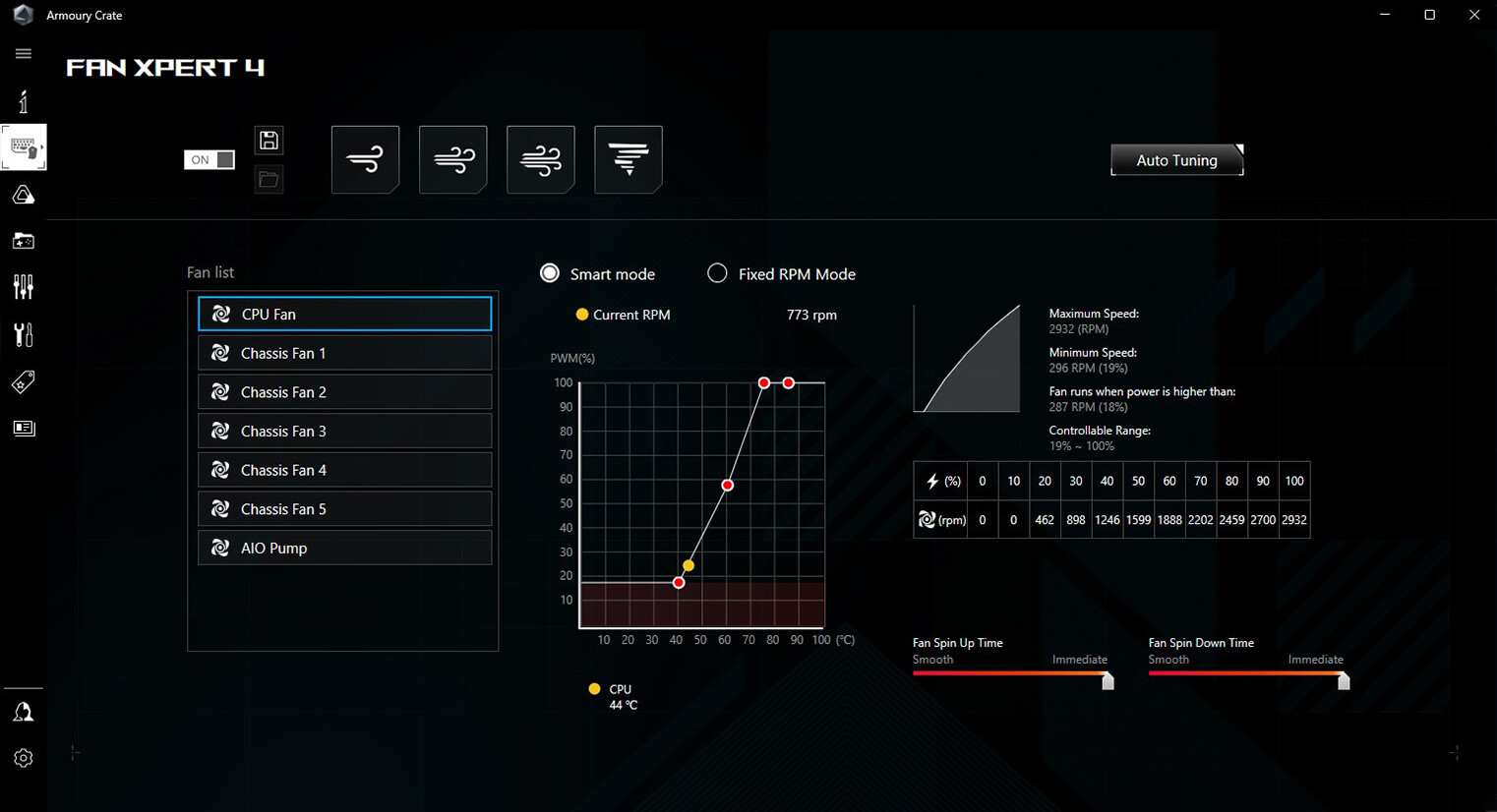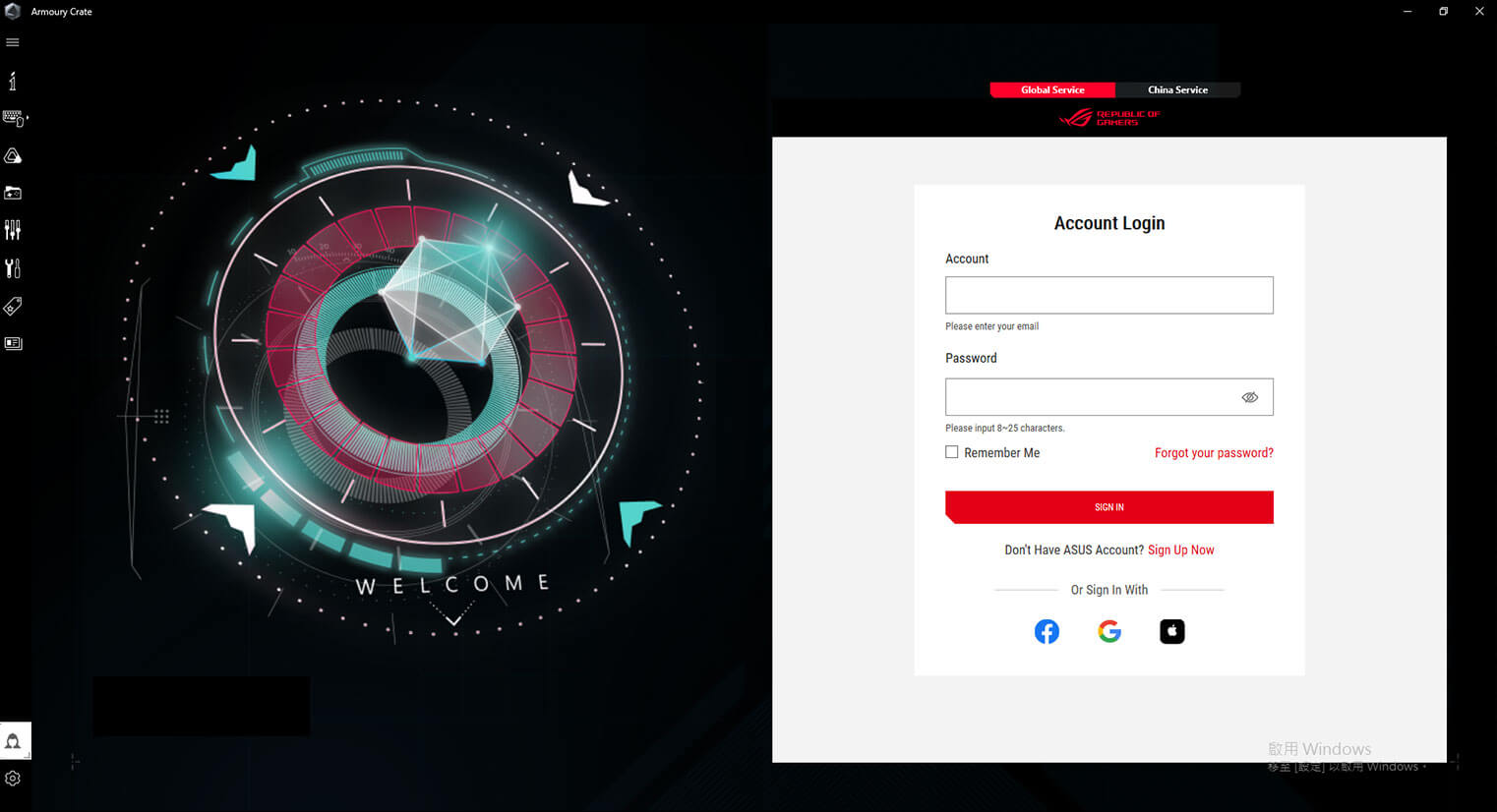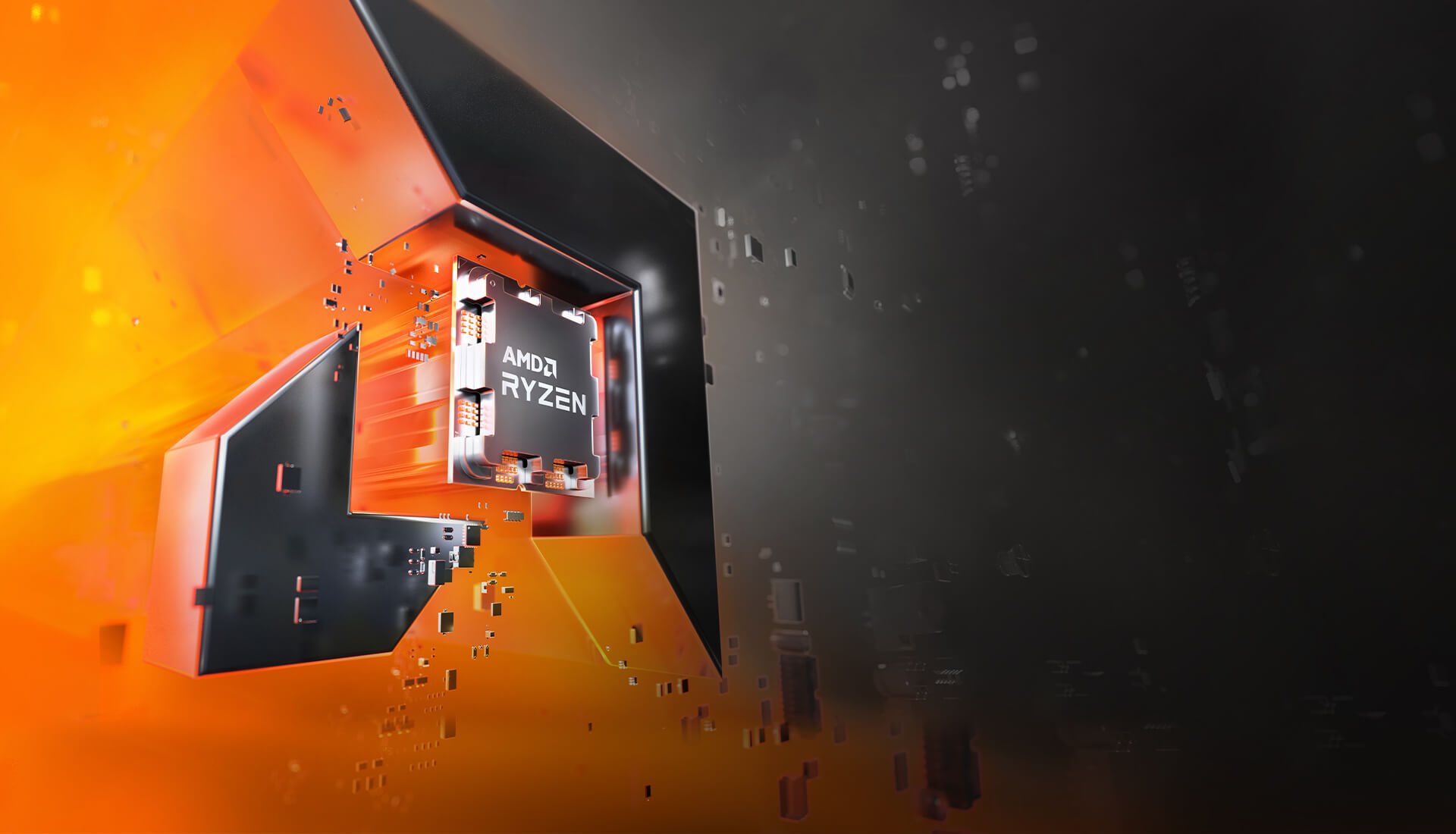PCIe 5.0
Fully embracing the new standard, the Strix B650E-I offers end-to-end PCIe 5.0 support to give unfettered bandwidth for the fastest SSDs and graphics cards available. The x16 expansion slot is Gen 5-ready, and is protected with a SafeSlot retention bracket. The onboard M.2 slot is also geared for PCIe 5.0, allowing for blistering 16 GB/s read and write speeds, while the other slot delivers still-impressive 8 GB/s transfers over its PCIe 4.0 interface.
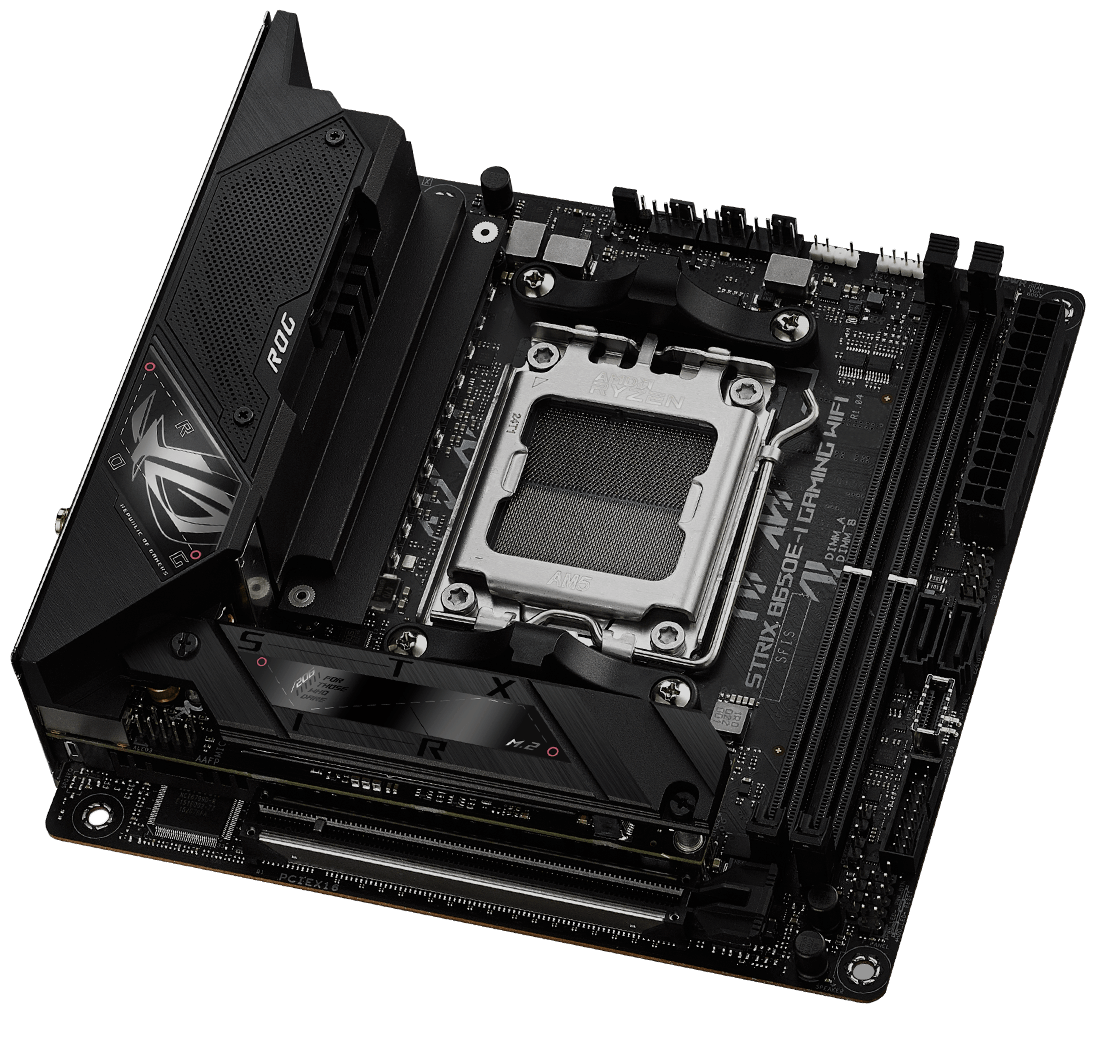

- Dynamic OC Switcher
- Core Flex
- PBO Enhancement
Lightly-threaded tasks get fantastic uplift using AMD Precision Boost Overdrive (PBO), but all-core frequencies can be pushed higher via traditional overclocking. The Dynamic OC Switcher automatically engages PBO or your preferred settings based on the CPU current or temperature, giving you the best of both worlds. Core Flex and PBO Enhancement can also be deployed to work in tandem with the Dynamic OC Switcher and further bolster performance.
DYNAMIC OC SWITCHER
The best way to overclock Ryzen 7000 with ROG's Dynamic OC Switcher.
Dynamic
OC Switcher


 Temp
Temp Current

MANUAL OC
Ex: > 35A, < 80°Performance
AMD PBO
Performance
EXAMPLE: If a user sets thresholds for current and temperature as shown, once CPU current exceeds 35A, the manual overclock engages until the temperature reaches 80°. At all other times, Precision Boost Overdrive will be used.
Core Flex empowers you to smash limits farther than ever before by letting you control current, power, and thermals in creative new ways. In its simplest form, you can let your system run unrestricted during lighter loads and set breakpoints to gradually reduce power consumption as temperature increases. But the system is extremely adaptable, supporting multiple user-controlled functions that can manipulate parameters independently so that you can bend CPU performance to your will.
CORE FLEX
Core Flex


 Temp
Temp Current
Voltage

MAX PERFORMANCE
MEDIUM
SAFE & STABLE
PBO ENHANCEMENT
AMD Precision Boost Overdrive (PBO) pushes the CPU current and voltage budget to opportunistically increase performance. By aggressively tuning the PBO parameters, AMD’s algorithm can leverage the motherboard’s robust power solution to ramp up performance even higher.

- EDC
- PPT
- TDC
- Fmax
- Scalar
WHAT'S NEW?
As the first foray of AI Overclocking on an AMD architecture, the set of parameters has changed substantially, but voltage and clock speeds are still the primary targets for adjustment. Every core has a recommended VID and frequency, with the latter based on a combination of ratio and Asynchronous BCLK tuning.
Predictive settings in the utility are designed to work in tandem with Precision Boost Overdrive (PBO), but they go one step further by enhancing the values for EDC, TDC, and PPT, as well as tuning the curve optimizer.
Finally, by enabling the Dynamic OC Switcher, AI Overclocking ensures that the CPU is using ideal settings whether in single- or multi-threaded workloads.

EXAMPLE: EDC
By managing the Electrical Design Current (EDC) in tandem with the total current, this CPU can gain extra performance for short, demanding bursts.
During lightly-threaded workloads, below 35A, the Level 1 EDC is set to a low value, in this case 60.
As more cores are needed, the EDC is set to 120, which was found by this user to be a sweet spot for performance.
Once the CPU passes 70A, it is in multi-threaded territory, where it was found that a high EDC of 250 gave optimal performance.

EXAMPLE: PPT
To keep CPU temps under a specific threshold, this user sets constraints for the Package Power Target (PPT). Specifically, the short-term value (“Fast”) is used.
Until the CPU reaches 70°, it can run at full performance, so 350W is set to give plenty of overhead.
When the temperature is above 70°, the power limit is reduced to 220W, to let the CPU cool down.
If the system continues getting hotter under sustained load, then at the threshold of 85° the PPT reduces further to 165W.


POWER ARCHITECTURE
10 + 2 + 1 power stages rated to handle up to 70A each deliver ample current in order to drive Ryzen 7000 through any workload with ease.
ALLOY CHOKES AND DURABLE CAPACITORS
Hi-end chokes and durable capacitors are engineered to resist extreme temperatures, enabling performance that exceeds industry standards.
TEN-LAYER PCB
A multi-layered printed circuit board design quickly dissipates heat around the voltage regulators to improve overall system stability and provide the CPU with more overclocking headroom.
- DDR5 Strength
- DIMM Fit / DIMM Fit Pro
- AEMP
DDR5 STRENGTH
For those who want to fly past stock DDR5 speeds, the ROG Strix B650E-I is primed and ready for enthusiast-grade kits courtesy of vast AMD EXtended Profiles for Overclocking (EXPO) support. Seasoned veterans can further tweak performance via the extensive array of settings in the UEFI.
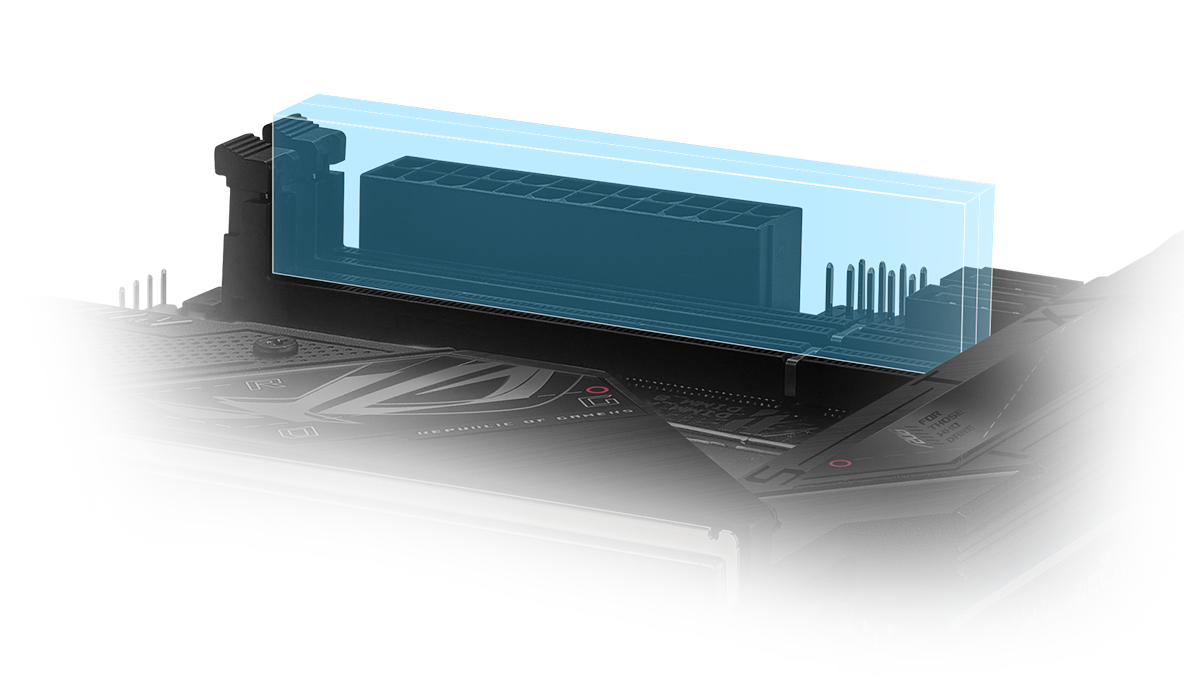
DIMM Fit / DIMM Fit Pro
DIMM Fit is an ASUS-exclusive BIOS feature that precisely analyzes individual memory modules to optimize performance and pinpoint potential issues.
DIMM Fit Pro gives advanced PC builders more extensive customizability for memory tuning. It allows users to control up to twenty overclocking parameters, define testing ranges, and prioritize stability or performance, offering a more flexible and granular approach to memory optimization.
DIMM Fit / DIMM Fit Pro
AEMP
ASUS Enhanced Memory Profile (AEMP) is an exclusive firmware feature for PMIC-restricted memory modules. AEMP automatically detects the memory chips on your kit and then presents optimized profiles with higher frequency and tighter timings that you can effortlessly apply to unleash performance.
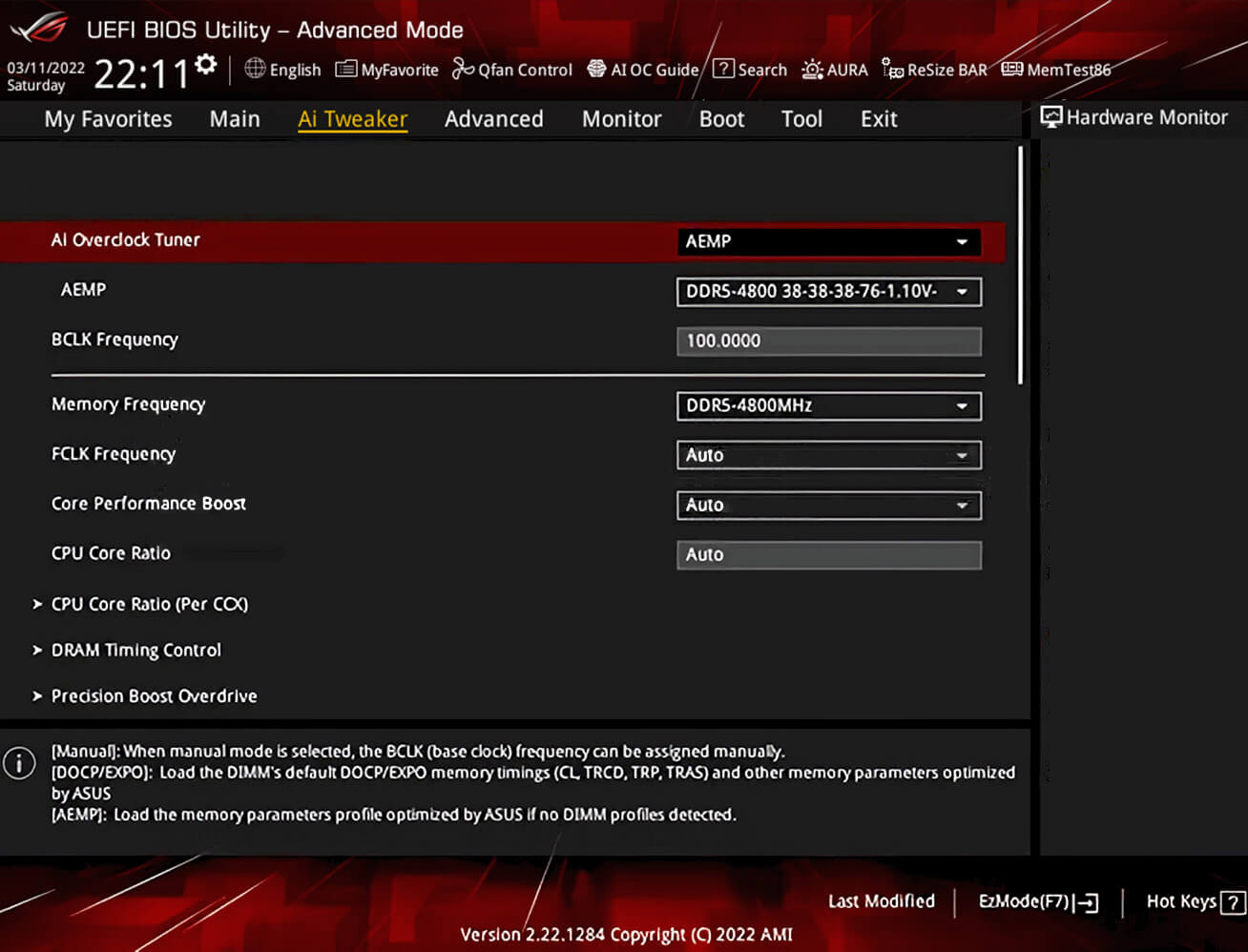
- VRM
- M.2
- CPU
- Chassis
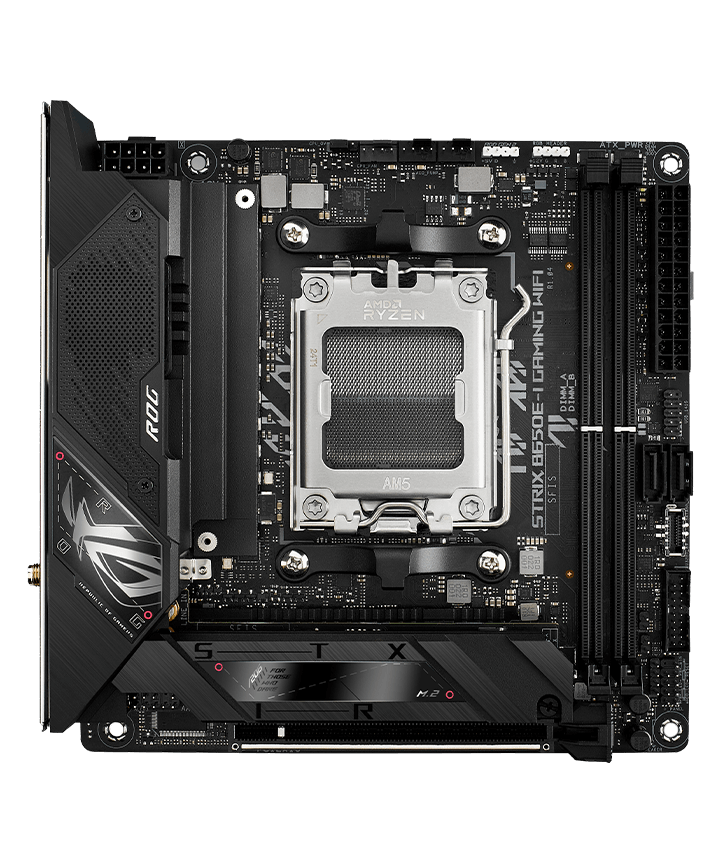

-
VRM COOLING ARRAY
Substantial heatsinks cover the power solution, bolstered by a quiet thermal system that intakes from the core and outputs heat upwards through a ventilated top, so the VRM stays cool even in air-restricted systems.
-
HIGH-CONDUCTIVITY THERMAL PADS
High-quality thermal pads are utilized between power stages and heatsinks, helping to improve heat transfer and reduce VRM operating temperatures.

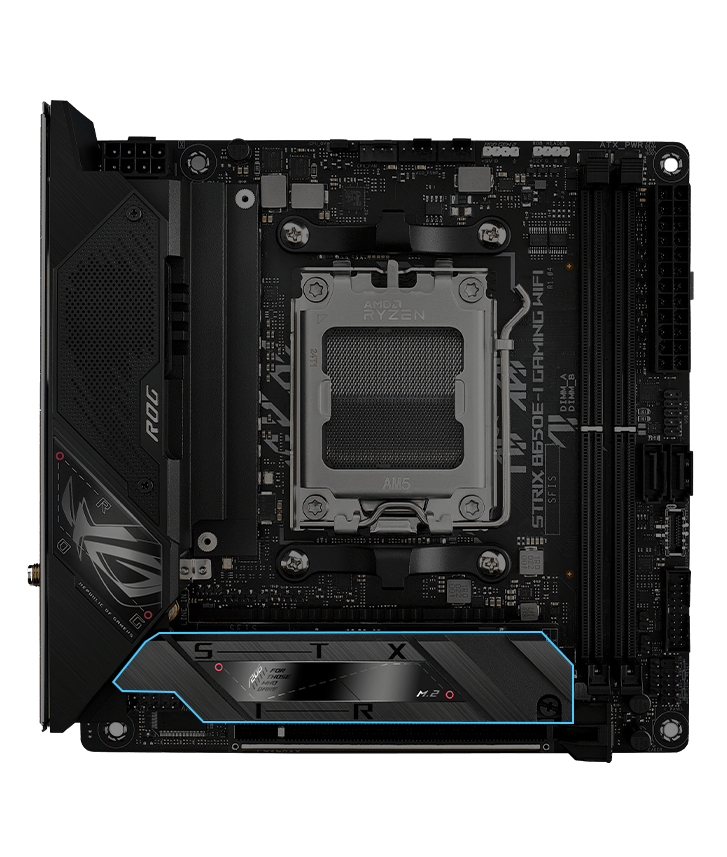
-

M.2 HEATSINK
A large heatsink covers the NVME SSD slot to help keep your drive optimal temperatures for consistent performance and reliability.


-
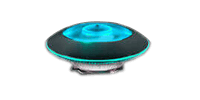
CPU FAN HEADER
A dedicated pair of PWM/DC fan headers provides easy access to CPU coolers.
-

AIO PUMP FAN HEADER
A dedicated PWM/DC header connects self-contained water-cooling setups.


-
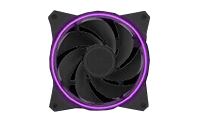
4-PIN FAN HEADER
The chassis fan header supports auto-detection of PWM or DC fans.















